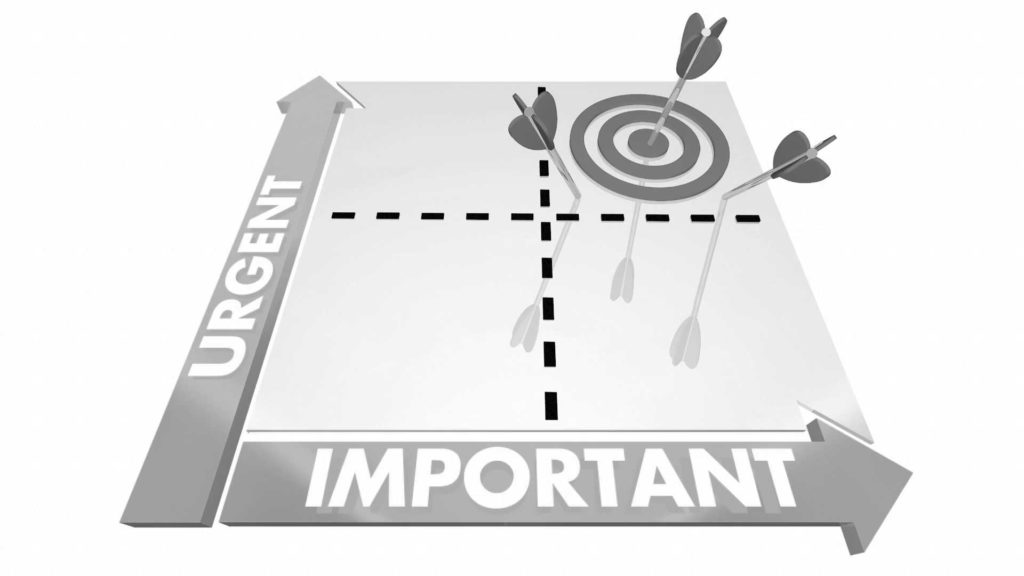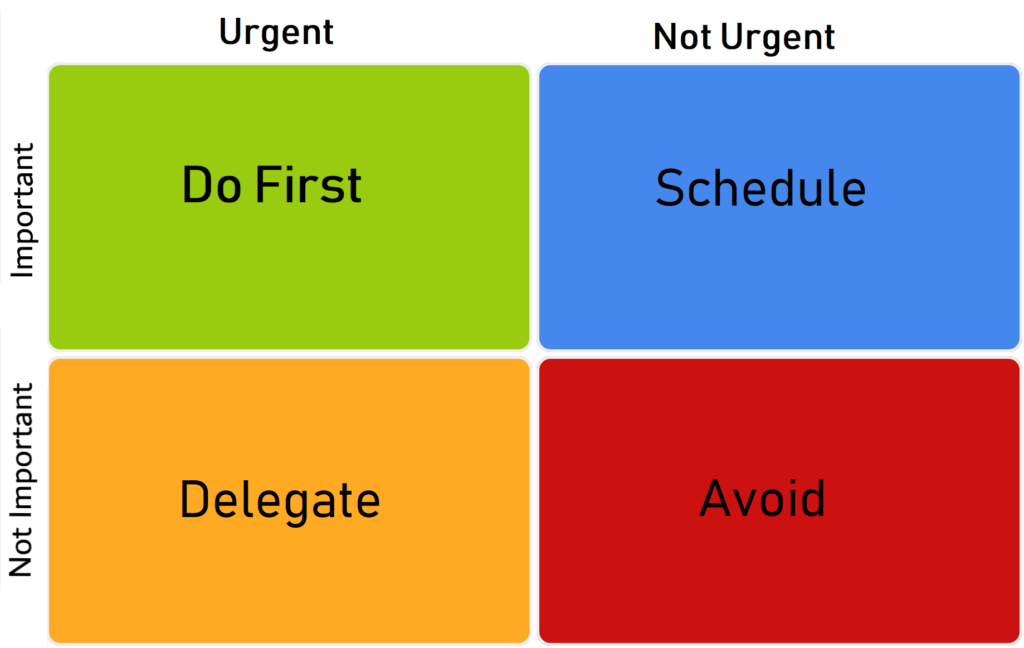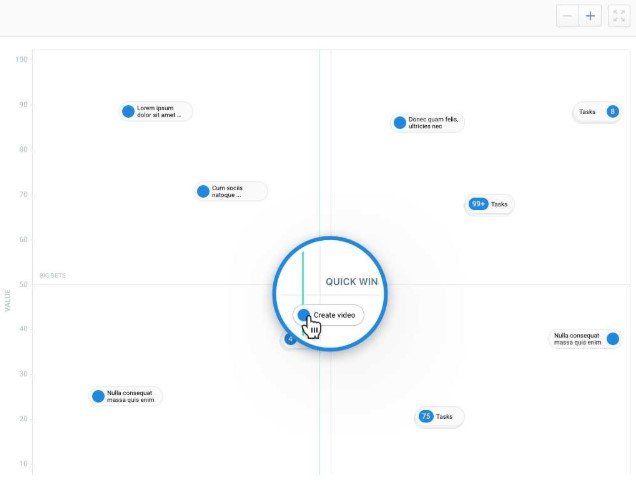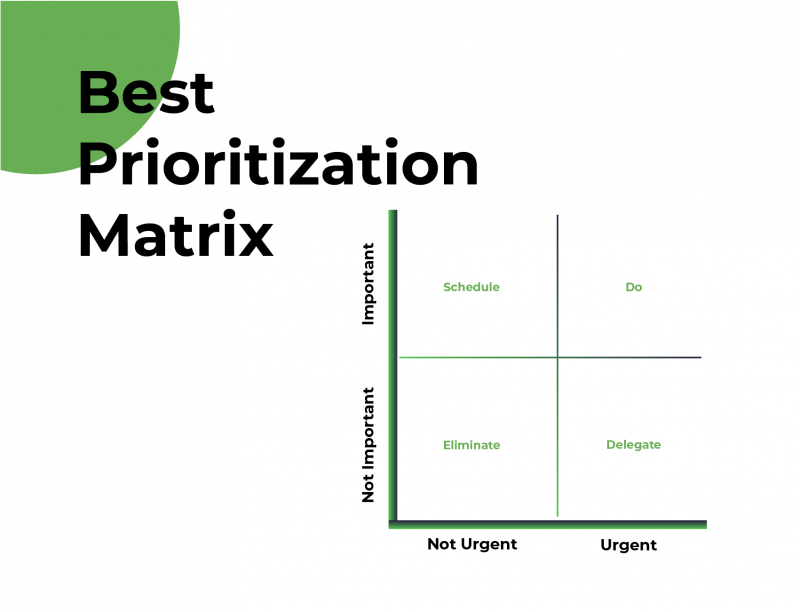Managers are often overloaded with daily tasks and routine issues. Handy to-do lists do not cut them anymore. How to find harmony in this case?
A possible solution is a professional prioritization. This element of effective business management is helpful, especially when people do not only rely on intuition but also when they apply various methodologies or prioritization matrix frameworks.
If you are looking for a stunning method to help you stay organized and set priorities in your business, company, or even school, then you have to try using a prioritization matrix!
In this post, we cover the key aspects of applying different kinds of prioritization matrices. You will find it useful if you are dealing with projects, product management, marketing, sales, and other business areas.

What is a project prioritization matrix?
A prioritization matrix is a business tool for analyzing processes and comparing choices with the help of defined criteria.
You may apply this matrix in any environment, from your daily routine tasks to complex projects. It can be used by individuals and large corporations. Using the project prioritization matrix, you get a reliable process for resolving disagreements and defining which items or business issues to focus on. Prioritization matrices also assist managers and stakeholders in weeding out hidden obstacles and promoting consensus.
Nowadays, you may find various types and forms of prioritization techniques and frameworks in accordance with the complexity of assessment criteria and their definitions.
The issue prioritization matrix looks beneficial concerning the following work aspects:
- improving the logic and structure of the current project;
- meeting all the product development terms thanks to the strong time management culture;
- implementing the most significant amount of work with minimal time and material expenses.
Why should you use a prioritization matrix?
- It helps to organize work and show it visually.
- It facilitates collaboration within team players, no matter where they are.
- It allows tracking the assignments you have to complete first and the ones you can do later.
- It lets you organize work with notes, due dates, attached files, and links.
- It helps you stay on top of the project.
Prioritization Matrices Examples
2×2 Matrix
There are prioritization frameworks that are based on a simple and handy 2×2 matrix or a famous Eisenhower matrix for prioritization. It is widely used by regular employees, middle managers, and the heads of large companies.
The Eisenhower matrix teaches how to correctly prioritize tasks, distinguish the important/unimportant, urgent/not urgent, necessary/unnecessary tasks, and how to shorten the time for doing any particular action.
The matrix includes 4 quadrants on two axes:
- the vertical axis of importance
- the horizontal axis of urgency

Each quadrant has its own quality indicators. All tasks are placed in a specific quadrant, and you get a clear picture of what should be done first.
Quadrant A represents important and urgent tasks
This quadrant is often filled because of people’s laziness and wrong prioritization. You’d better avoid placing tasks into this part of the matrix. However, the following points are worth being placed here:
- Issues that can negatively affect the goal
- Issues that can cause real difficulties
- Health issues
If the A quadrant contains the issues that you can delegate to someone, you should do it to solve other urgent and important matters.
Quadrant B includes important but not urgent tasks
The lack of urgency lets solving challenges more constructively and deliberately.
The issues in this quadrant have the highest priority. Practice shows that people working with the tasks from this quadrant achieve the greatest success and earn more money. If these tasks are not performed timely, they can easily get into the quadrant A.
Quadrant C means urgent but not important tasks
The tasks from this quadrant typically do not move people to the intended results. They distract, interfere, and reduce efficiency.
It is important not to confuse the urgent tasks of the C part of the matrix with the urgent issues of quadrant A.
Quadrant D includes not urgent and not important tasks
The tasks and issues placed in this quadrant do not bring any benefit at all. Sometimes it’s worth even to ignore them or deal with them last.
These issues can be simple to perform and allow relaxing, that’s why they look attractive for many people.

Many frameworks have taken this structure as a basis, for example,
Value vs Effort prioritization matrix:
This simple matrix help product managers to sort out all their working items and put things in order.
When a product backlog is not maintained well, it can quickly become a place for hundreds of features and bugs. Priorities disregarding happens as it becomes harder to determine inappropriate features.
Here’s the matrix that compares the Value and Effort combination to prioritize issues better and select the most important for development:
- Value reflects which business value a particular feature may bring to the product
- Effort evaluates required resources to complete the task
For example, the matrix designed by a project management tool Hygger.io includes 4 segments with a specific priority block:
- Quick Wins cover the features that provide a lot of value and can be realized quickly.
- Big Bets include features that can bring a lot of value but are difficult to implement.
- Maybes comprise the features that do not bring much value but are easily implemented.
- Time Sinks are features that can be skipped.

Would you like to explore more prioritization matrices based on the Eisenhower 2×2 model? Here are the most relevant of them:
- Value vs Complexity
- Value vs Risk
- Value vs Cost
There are also more complex matrices, for example, those used in the Six Sigma methodology.
Prioritization Matrix for Six Sigma Method
This matrix requires a more thorough approach to application. In the context of the Six Sigma technique for continuous improvement, the prioritization matrix is used to compare the sets of data with the help of weighted criteria.
The Six Sigma concept defines a prioritization matrix as a practical tool for planning and analysis the phases of continuous improvement methodologies.
According to Lynne Hambleton (the author of “Treasure Chest of Six Sigma Growth Methods, Tools, and Best Practices“), there are three types of prioritization matrices within Six Sigma:
- Full analytical criteria. The most complex prioritization matrix involves using multiple matrices to compare different pairs of options for producing a final matrix.
- Consensus criteria. This is the simplified version of the full analytical criteria that comes to rescue when all of your options seem equal. The framework utilizes weighted voting. Each option gets value to rank priority.
- Combination matrix. This matrix will suit well for prioritizing options based on a cause-and-effect relationship. The causal-based matrix means that you will need a consolidated team with deep knowledge of the process you’re optimizing your priorities for. The matrix includes L-shaped charts to visualize critical relationships between groups and a tree diagram to show the hierarchy of tasks.
What is the Prioritization Process?
Let’s consider the simplest form, a 2×2 prioritization grid with the direct concepts of Urgency and Importance.
First of all, before thinking about the prioritization of your tasks, you should make a list of them.
- Identify consequences
Ask yourself what might be the consequences of not performing each of your tasks.
- Define what is important
At this stage, your list should be split into two categories: high importance and low importance. Keeping in mind all the consequences you listed in the previous step, place every option into the category that fits most.
- Define what is urgent
All the items with high importance and low importance should be split into sub-categories of high and low urgency. Thus you will get four groups in total.
- Assign number values
Assign number values 1 to 4 to every option. A lower number will mean a higher priority:
- 1 for high importance and high urgency
- 2 for high importance and low urgency
- 3 for low importance and high urgency
- 4 for low importance and low urgency
Conclusion
Unfortunately, it is not always possible to spend all working hours wisely and complete all the necessary tasks. A well-chosen prioritization matrix will help you perform your everyday routine tasks more accurately.
What is your personal experience in using different prioritizing methods for improving working processes? Do you have your favorite prioritization matrix? Please, do not hesitate to share your experience.





